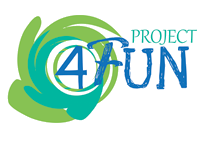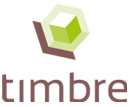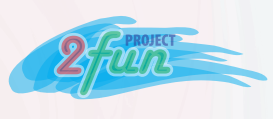4-FUN – Demonstration and exploitation of most promising prototypes and tool derived from European resarch actitivities
4-FUN is a 3-year Integrated Project (2002-2015) funded within the European 7th Framework Programme and involving 14 partners from 9 European countries.
The assessment of risks to human health from chemicals is of major concern for policy and industry and ultimately benefits all citizens. In this process, exposure assessment is generally considered to be the weakest point, as currently available tools show major flaws:
(a) lack of integrated approach for assessment of combined stressors (i.e. a number of potential pollutants);
(b) widespread use of worst-case scenarios leading to over-conservative results;
(c) lack of uncertainty/sensitivity tools that allow identifying the important exposure drivers.
To overcome these drawbacks, the FP6 project 2-FUN produced prototype software containing a library of models for exposure assessment, coupling environmental multimedia and pharmacokinetic models. The objective of the 4FUN project is to further improve and standardise the 2-FUN tool and guarantee its long term technical and economic viability. Stakeholder requirements will be identified and an analysis of the strengths, weaknesses, opportunities and threats (SWOT) of existing exposure assessment tools (including 2-FUN) will be conducted. The 2-FUN tool will be subject to a rigorous standardisation which includes verification, benchmarking, documentation and demonstration. To demonstrate the reliability of modelling estimations and the feasibility of building complex realistic scenarios, case studies based on actual datasets will be performed. Improved and standardised 2-FUN software will be delivered, together with supporting documentation and training courses.
Finally, based on detailed market research a sustainable business model will be developed. Improved exposure assessment due to the project will
(a) reinforce competitiveness by avoiding overregulation;
(b) prevent excessive adverse human health effects due to underregulation;
(c) contribute to the promotion of sustainable products/technologies;
(d) lead to homogeneous integration of exposure health concerns across the policy spectrum at the Community level.
GLOCOM: Global Partners in Contaminated Land Management
GLOCOM is an exchange program funded by the Marie Curie Actions – International Research Staff Exchange Scheme, within the Seventh Framework Programme – People.
The project’s Partners are:
- University Ca’ Foscari of Venice, Italy
- Umeå University, Sweden
- Chinese Research Academy of Environmental Sciences, China
- Beijing Normal University
The general objectives of the GLOCOM exchange program are as follows:
- Increase harmonization of methods for risk assessment and management of contaminated sites in China and EU;
- Develop solutions for management of contaminated sites in China;
- Strengthen quality of research by developing international collaborations.
This will be performed through the organization of several exchange activities in the fields of contaminated soil characterization, environmental risk assessment and decision making processes. These exchange activities aim to increase quality and mutual benefit of the transfer of knowledge between the involved researchers from EU and China, in particular through the organization of workshops and training sections and the co-participation in conference and scientific publications, with the aim of identifying common ground for future research.
TIMBRE – Tailored Improvement of Brownfield Regeneration in Europe
Brownfield regeneration plays a key role in sustainable land use management. The 7th Framework Programme project TIMBRE (Tailored Improvement of Brownfield Regeneration in Europe) starts from the observation, that many useful and innovative remediation technologies as well as methods to support risk assessment and decision making processes for an optimized brownfields’ regeneration have been developed, but are only rarely applied using their full potential. Identified obstacles for an effective regeneration are (i) the abundance of strategies, tools, documented case studies and remediation technologies available at the EU level as well as (ii) the difficulties in adapting them to cultural, regional and site-specific requirements.
TIMBRE’s main objective is to overcome these barriers by providing brownfields’ owners, local authorities and stakeholders with a web-based problem- and target-oriented customizable decision support toolbox.
The research activities within TIMBRE focus on the methodological approach and designed activities of TIMBRE Work Package 1 that concentrated on the development of a web-based Expert System. As a crucial part of the TIMBRE toolbox, this online information centre will provide access to proven state of the art solutions for brownfield regeneration. This requires the collection, analysis and classification of accessible literature, methodologies and tools. Particular efforts will be devoted to collect and review the ecological and human health risk assessment and management methodologies and tools recognizing their key role for the evaluation and rehabilitation of brownfields.
The Expert System will offer a multi-criteria methodology for the evaluation and ranking of the collected information providing end-users with the most suitable instruments for each phase of the brownfield regeneration process. Results will be tailored to the site-specific needs taking the local priorities and requirements into account. This approach involves local experts, site owners, public authorities and engineering companies in the definition of evaluation criteria.
Link: http://www.timbre-project.eu/
2-FUN – Full-chain and UNcertainty approaches for assessing health risks in FUture eNvironmental scenarios
2-FUN is a 4-year Integrated Project (2007-2011) funded within the European 6th Framework Programme and involving 12 partners from 9 European countries.
2-FUN aimed at providing decision-makers with innovative tools to analyse the current and future trends in environmental conditions and pressures that may lead to health problems. Specific scientific actions were set up to develop methodologies, databases and models on the following topics:
- Building future realistic socio-economic, environmental and health scenarios;
- Integrated exposure and effect assessment of multi-stressors via multiple routes;
- Integration of children’s issues in health risk assessments;
- Development of uncertainty models for improved health management;
- Demonstrations of a full-chain approach for health risk assessment.
2-FUN engaged in a structured dialogue with all interested parties (stakeholders, policy-makers and researchers) to monitor large environment- and health-focused scientific initiatives and to incorporate their needs in the development of tools for health risk assessment. The developed tools were tested on 3 European case studies covering a wide range of temporal, spatial, environmental, and societal contexts:
- evolution of air pollution and thermal stress in Portugal;
- assessment of the health impact of chemical contamination of a river watershed in France;
- health risk assessment of contaminated soils for children living in the industrial area of Upper Silesia region in Poland.
Our research group was involved as coordinator of WP1 – Construction of realistic scenarios, accounting for future environmental and societal changes.
A “Risk-based Tool for the Regional Ranking of Environmental Chemical Stressors” has been developed by the research group within WP1 activities, with the main aim of supporting decision-makers in the evaluation of the existing information on environmental contamination and population health status in the region of interest to identify priority chemical stressors to be investigated more urgently. Moreover, the tool allows the identification of priority areas within the considered region, where further assessment should be focused.
Link: http://www.2-fun.org
DESYRE – DEcision Support sYstem for REhabilitation of contaminated sites
A new challenge in urban management is nowadays represented by the remediation of large contaminated industrial facilities. Different examples of these industrial sites are widespread in the European territory, from the Netherlands (e.g. the Port of Rotterdam) to Germany (the mining site of Bitterfeld) and the Eastern countries (e.g. the Tarnowskie Gory plant site in Poland). These sites, defined as megasites, are characterized by complex contamination patterns, several stakeholders’ involvement and high costs for total clean-up procedures. Their relevance is posed by the social, economic and also environmental benefits derived by their remediation and their new economic development.
Therefore, the definition of specific tools and strategies, that can help manage megasites complexity, is required. Specifically, the integration of all the different management aspects is a primary requirement: the consideration of the actual risk, the selection of the best technological options for site remediation, the socio-economic drivers or constraints, the planning issues, are among the significant aspects which are to be strongly taken into consideration. Equally, the active involvement of all the stakeholders in the decision process is another important requisite in order to successfully accomplish management objectives.
In this communication we present the experience gathered in the management of the Porto Marghera site, through the development of a decision support system called DESYRE. Porto Marghera, near the city of Venice in Italy, is the largest contaminated site of national interest (approximately 3500 hectares). The main productions are represented by petrochemical and chemical plants; spread contamination affects soil and groundwater.
The regulatory framework is represented by the Program Agreement on Chemistry (1998), signed by several stakeholders, and the Master Plan (2001), based on a risk minimization approach. In order to address the management of a complex megasite such as Porto Marghera, the DSS DESYRE (DEcision Support sYstem for REhabilitation of contaminated sites) has been developed. In fact, it has been successfully tested in two areas of the Porto Marghera site. DESYRE is a GIS-based software composed of five interconnected modules.
In the characterisation module, chemical and hydrogeological data are organized in a relational database and contaminants distributions are mapped by using geostatistic tools.
- The socio-economic module addresses the socio-economical constraints though a Fuzzy Logic analysis, until the selection of the best land use.
- The risk assessment module is divided into two phases. In the pre-remediation phase, an original procedure allows to assess and represent the spatial distribution of risks posed by contaminants in soil and groundwater, providing a risk-based zoning of the site.
- Then, in the technology assessment module, a selection of suitable technologies and the creation of different technology sets, taking into account both technical requirements and site-specific features, is performed by experts supported by Multi-Criteria Decision Analysis tools. In the post-remediation risk assessment, a simulation of applied technologies provides residual risk maps with related uncertainty maps.
- Finally, in the decision module, alternative remediation scenarios are described by a set of indices; the scenarios can be compared and ranked by the interested stakeholders using Multi-Criteria Decision Analysis methodologies.
SYRIADE – Spatial decision support sYstem for RegIonal Assessment of degraded Land
The overall objective of the system is the ranking of potentially contaminated sites for priority of investigation, when no information on characterization and risk by site specific methodologies is available. This way, the system is intended to address not only the requirements of the Soil Thematic Strategy, but also a general and ordinary goal of regional authorities, i.e. to manage their contaminated sites in the most cost-effective way, by concentrating on those areas that could be pose a risk to human health and the environment.
To reach the objective, the system performs a prioritization of contaminated sites based on the environmental risk estimated through a regional risk assessment, and on a socio-economic relevance analysed through indicators of recovery potential. Three main components are identified: the environmental (risk assessment) and the socio-economic (recovery potential), leading towards to the ranking of sites (integrated management).
The three Modules of the system reflect the following components:
- a module for the regional risk assessment (environmental analysis);
- a module for the socio-economic analysis (recovery potential);
- a module for the integrated management and final ranking.
The first Module (Regional Risk Assessment) includes functionalities that allow a first ranking of potentially contaminated sites to be performed, only considering environmental aspects, such as a sites hazard and receptors vulnerability. Additionally for the mining waste sites, the risk of subsidence i.e. the movement of the surface resulting from the collapse of overlying strata into main voids (physical risk) is taken into account using a specific ranking.
The main output of the Regional Risk Assessment Module is a ranking of the potentially contaminated sources or sites based on the potential regional risk score.
The second Module (Socio-economic Assessment) is aimed at providing a score for each administrative unit (or NUT) based on socio-economic indicators such as unemployment, GDP, population density, land use, and infrastructure. A score is assigned to each administrative area.
The third Module (Integrated Management) integrates the outputs of the previous two Modules, in order to provide a prioritization of sites based on the potential environmental regional risk and the socio-economic priorities. The latter Module allows also the definition of integrated management areas, characterized by the combined outcomes of environmental and socio-economic analyses.
The project was funded by the EC Joint Research Centre in Ispra (contract n. 381502 FISC).
Sino Italian Environmental Regional Risk Assessment (SIERRA) Project
SIERRA Project was funded by the Italian Ministry for Environmental Protection and developed in collaboration with the Chinese Research Academy of Environmental Sciences (CRAES; Beijing, China); started in 2009 and lasting 3 years.
The project fits with the proposing definition of a contaminated land management approach in China, providing support for the definition of a framework for the management of these critical issue in the country, taking into account risk assessment methodologies, regional-based approaches and technological progresses, as well as international distinguished experiences. Accordingly, in the light of developing regulatory and management approaches to the problem, the reference to international experiences, specifically in Europe, provides an important resource of information and tools.


